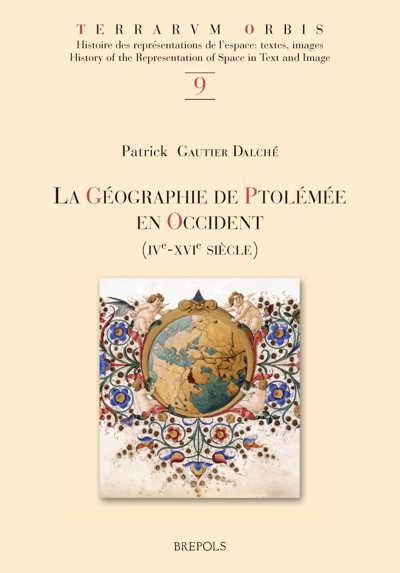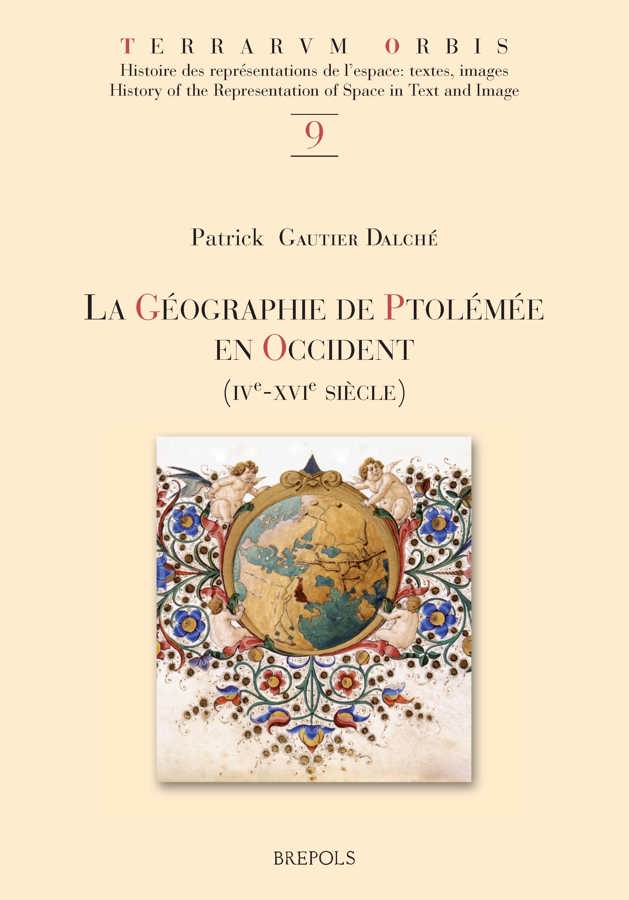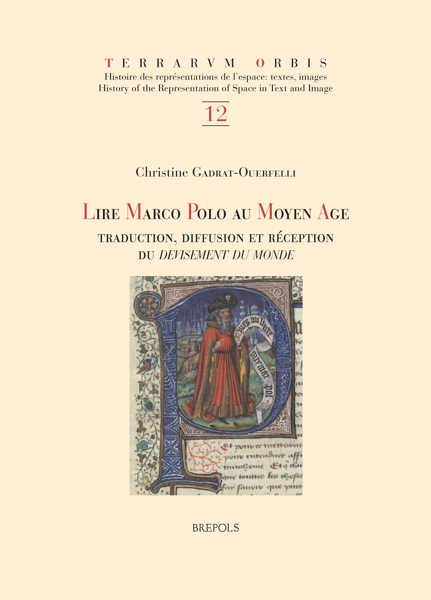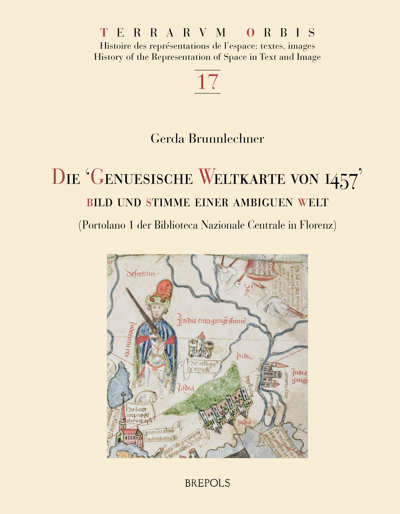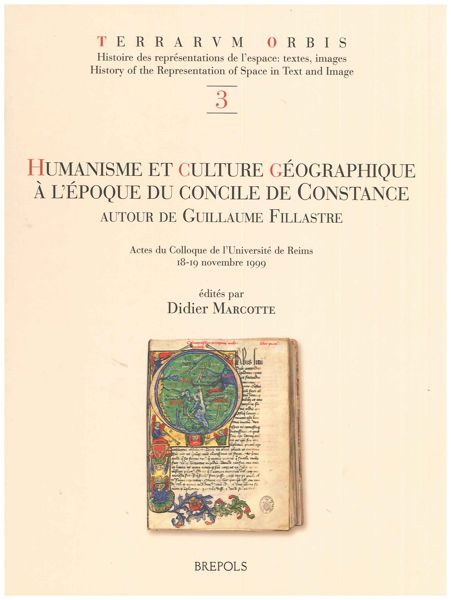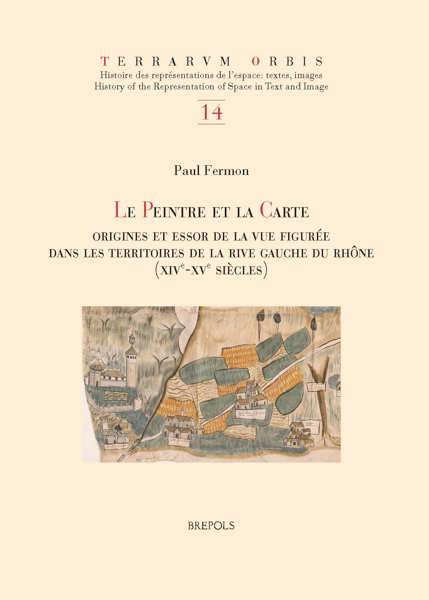
La Géographie de Ptolémée en Occident (IVe-XVIe siècle)
Patrick Gautier Dalché
- Pages: 443 p.
- Size:210 x 270 mm
- Illustrations:30 col.
- Language(s):French
- Publication Year:2009
- € 95,00 EXCL. VAT RETAIL PRICE
- ISBN: 978-2-503-53164-9
- Hardback
- Available
"A fabulous, most rewarding excursion into a rather little known historical territory from which we return absolved of preconceived ideas, with a better, fairer appreciation of what Ptolemy's Geography is all about." (W. Bodenstein, in Journal of the International Map Collectors' Society 123, Winter 2010, p. 25)
"One can well think that a great deal of time will pass before this work is replaced. It deserves a wider readership than the rather circumscribed circle of historians of cartography and geography." (Michel-Pierre Lerner, in Journal for the History of Astronomy, May 2011, p. 275)
"This is an exceptionally thorough study, which should lay to rest one of the last great myths of cartographic history. Ptolemy was not a central figure within medieval thought [...]. Yet Gautier Dalché's reassessment of medieval and early-modern geography through a Ptolemaic prism provides a tremendously rewarding study of a hugely varied intellectual heritage." (A. H. Merrills, in Speculum, 86/1, January 2011, p. 194)
"In this prismatic bonding of Ptolemy's world with the cosmographic complexity of the work over centuries, Dalché offers a new and critical perception fo this major work that future scholarly studies must take into account; a very serious, attractive, and enthusiastic work." (Martine Sauret, in Sixteenth Century Journal, XLII/1, Spring 2011, p. 171)
"Bref, une très belle étude et un outil de travail désormais incontournable pour quiconque s'intéresse à l'histoire de la Géographie (et de la géographie) avant Ortelius et Mercator." (D. Juste, dans Scriptorium, 2010, 2, p. 188)
"This book, which is as polemical as it is wise [...] constitutes a very significant update of the study of the reception of a text of extraordinary importance for the formation of modern scientific thought, Claudius Ptolemy's Geography. A work that historians of geography and cartography in particular, and of European scientific culture in general, must have in their libraries." (Piero Falchetta, in Isis, 101/3, September 2010, p. 628-629)
"On ne peut qu'être plein d'admiration pour la somme de connaissance déployée dans cet ouvrage; avec une érudition peu commune, l'auteur brosse un tableau étonnant de ces intellectuels de toutes origines qui, au long des siècles, ont maintenu vivant l'héritage de Ptolemée. [...] Bref, la savante étude de Patrick Gautier Dalché fournira d'amples sujets de réflexions à tous ceux qui s'intéressent à la réception des sources antiques." (G. Aujac, dans Latomus, 70, 2011, Tome 70, p. 1147-1149)
"Ce travail sur la réception du géographe au quadrant est désormais incontournable et servira, conformément au souhait de son auteur, de terreau pour d'autres recherches: il s'agit d'un grand livre dans une grande collection." (M. Mund-Dopchie, dans L'Antiquité classique, 80 2011, p. 398)
"To the publisher’s merit, the material quality of the series in which this book appears (Terrarum orbis) is excellent. The book is illustrated with twenty-two coloured plates (most of which never before associated with the reception of Ptolemy’s Geography) that further expand the exceptional intellectual strength and delightfulness of Patrick Gautier Dalché’s work." (Angelo Cattaneo, in: Studium, Vol. 6, No 1 (2013))
“Gautier Dalché offers a magnificent survey of how Ptolemy’s Geography was received from late Antiquity to the sixteenth century (…) We are in the presence of a master investigator. Patrick Gautier Dalché transcends the horizons of space and time in a great enterprise.” (Andrew Breeze, in Classics Ireland, 26, 2019, p. 158-160)
In Late Antiquity, Ptolemy’s treatise on cartography (second century AD) was yet to achieve the recognition that Ptolemy had hoped for, despite relatively wide distribution. However, in the early Middle Ages, knowledge of the Geographia did not disappear completely, owing mainly to treatises on astronomy translated from Arabic. The Latin version produced at the beginning of the 15th century did not, therefore, have the revolutionary character that is often attributed to it. The work that made it possible to understand the universe of Antiquity as it appeared in the classics was well received from the “literary” point of view. But the astrologists and scientists educated in universities were instrumental, in a way that has, until now, been little studied, in analysing the contradictions between the Ptolemy’s representation of the universe and other representations that were still current and accepted. The long process of the modernisation of Ptolemy’s vision entered a decisive phase at the beginning of the second half of the fifteenth century following the synthesis between humanism and natural philosophy. It continued until the beginning of the sixteenth century, considering the modes of representation (anachronistically called “projections”), retaining the concept of the influence of celestial bodies on the sublunar sphere, a feature of conceptions of the world held since Antiquity that the work of Ptolemy justified as best.
The reception of the Geographia, envisaged over a long period, does not therefore confirm the opinion that it played a fundamental role in the supposed move towards a “modern” concept of the universe distinct from a “mediaeval” model.
This book questions a certain number of commonplaces of cultural history. It is based on the first hand analysis of Greek and Roman texts and maps from highly diverse intellectual backgrounds.
Patrick Gautier Dalché is Directeur de recherche at the Centre National de la Recherche Scientifique (IRHT) and Directeur d’études at the Sorbonne, École Pratique des Hautes Études, Sciences historiques et philologiques.
La réception de la Géographie, envisagée sur une longue période, ne vérifie donc pas l’opinion selon laquelle elle aurait joué un rôle fondamental dans le passage supposé à une conception « moderne » distincte de la conception « médiévale » de l'espace.
L’ouvrage, qui remet en question un certain nombre de lieux communs de l'histoire culturelle, est fondé sur l’analyse de première main des sources textuelles et cartographiques de la tradition grecque et latine émanant de milieux intellectuels très divers.
Patrick Gautier Dalché est directeur de recherche au Centre national de la recherche scientifique (IRHT) et directeur d’études à l’École Pratique des Hautes Études, Section des sciences historiques et philologiques (Sorbonne).
